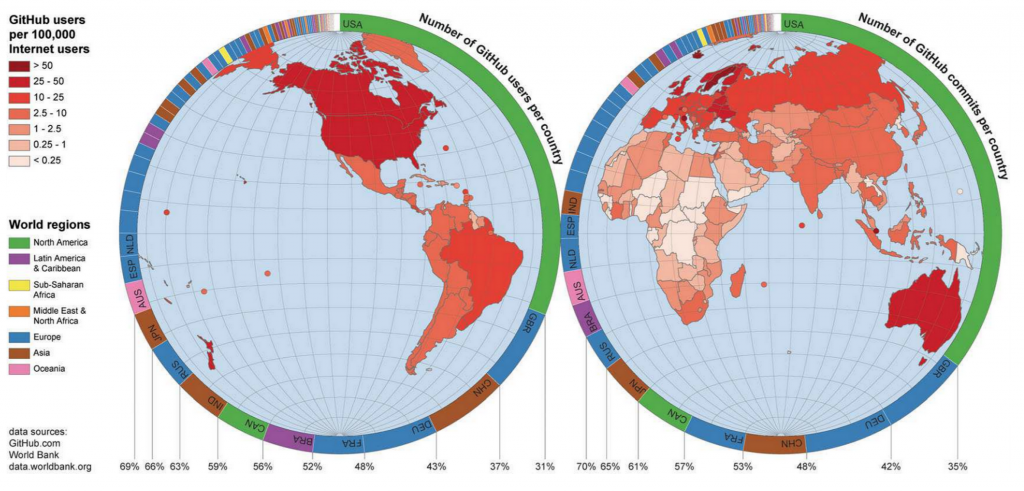Our research group spends a lot of time mapping the internet and the digital information that flows within it. So we decided to attempt to bring together a lot of that work into a single (open access) paper:
Graham, M., S. De Sabbata, and M. A. Zook. (2015) “Towards a Study of Information Geographies: (im)mutable Augmentations and a Mapping of the Geographies of Information.” Geo: Geography and Environment, doi:10.1002/geo2.8. (HTML version here)
Here’s the abstract:
Information has always had geography. It is from somewhere; about somewhere; it evolves and is transformed somewhere; it is mediated by networks, infrastructures, and technologies: all of which exist in physical, material places. These geographies of information about places matter because they shape how we are able to find and understand different parts of the world. Places invisible or discounted in representations are invisible in practice to many people. In other words, geographic augmentations are much more than just representations of places: they are part of the place itself; they shape it rather than simply reflect it. This fusing of the spatial and informational augmentations that are immutable means that annotations of place emerge as sites of political contestation: with different groups of people trying to impose different narratives on informational augmentations. This paper therefore explores how information geographies have their own geographic distributions: geographies of access, of participation, and of representation. The paper offers a deliberately broad survey of a range of key platforms that mediate, host, and deliver different types of geographic information. It does so using a combination of existing statistics and bespoke data not previously mapped or analysed. Through this effort, the paper demonstrates that in addition to the geographies of uneven access to contemporary modes of communication, uneven geographies of participation and representation are also evident and in some cases are being amplified rather than alleviated. In other words, the paper comprehensively shows one important facet of contemporary information geographies: that geographic information itself is characterised by a host of uneven geographies. The paper concludes that there are few signs that global informational peripheries are achieving comparable levels of participation or representation with traditional information cores, despite the hopes that the fast-paced spread of the internet to three billion people might change this pattern
We also have a forthcoming paper that explores some of the reasons for these inequalities in more detail (I’ll post more about it in a few weeks). But until then, we thought it would be worth documenting these digital inequalities in the digital and offering a framework through which we can think about them.
